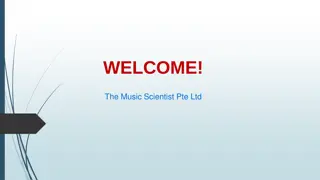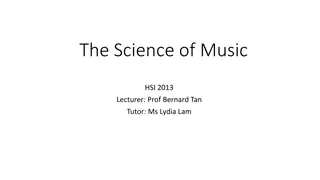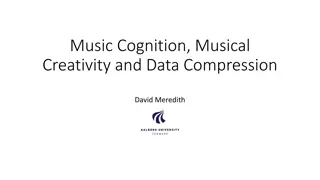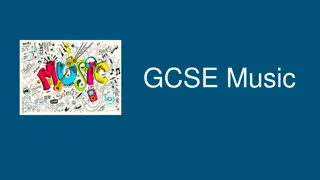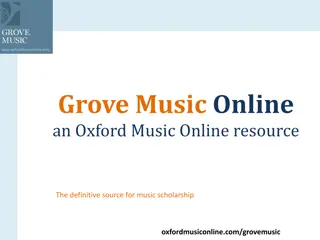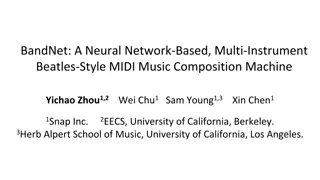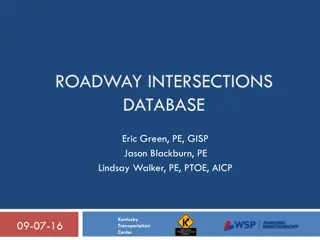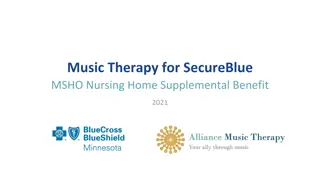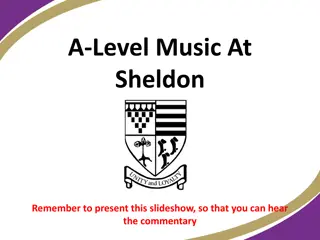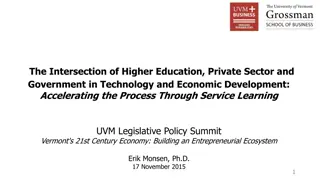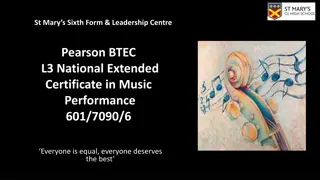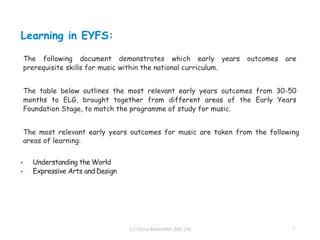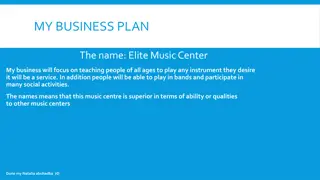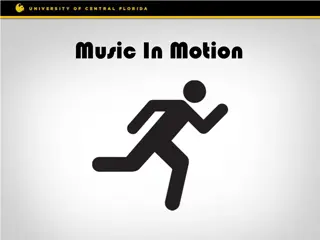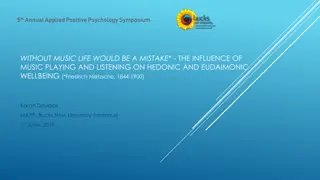Exploring the Intersection of Music Higher Education and Technology in the MUSense Project
"The MUSense Project at the Ionian University delves into the impact of technological advancements on music higher education. Delving into questions about the pedagogical implications, changes in performing practices, and the evolving relationship between performers and audiences, the project aims to provide innovative teaching and performance tools. The project's website serves as a hub for disseminating information, showcasing project partners, results, activities, and engaging the community with relevant news and contacts."
Download Presentation

Please find below an Image/Link to download the presentation.
The content on the website is provided AS IS for your information and personal use only. It may not be sold, licensed, or shared on other websites without obtaining consent from the author. Download presentation by click this link. If you encounter any issues during the download, it is possible that the publisher has removed the file from their server.
E N D
Presentation Transcript
MUSic higher EducatioN meetS the cyber dimEnsion (MUSense Project) The Website/Repository functionality Ioannis Deliyannis, Associate Professor, Ioannis Toulis, Professor, Department of Music Studies Department of AudioVisual Arts Ionian University, December 2022
Lets see what the project is about Our research focuses on the following questions: how (the technological) revolution will impact/affect the Music HE sector? Which will be the pedagogical/didactical implication in the short and long term? -which answers, if any, have specifically been given in the lockdown era by music students, teachers, staff of HEIs? -in which way new performing cyber practices have changed the artistic object and how curricula, skills training responded to it? -in which way the traditional relation between music performer and audience has changed? In addition, we should be able to provide tools that anyone can use to teach and perform using state- of-the-art technological solutions and innovative methods.
Website Task: Develop a Website for dissemination - done - https://musense.eu (communicating project/partner information, activities and aims so that a community can be built).
Website The following sections are available: Project Partners Results Repository Activities News Contact Login About the project (landing page) explaining what the project is about, displaying a selected number of case studies (when we implement them), and the latest news from our feed.
Website The following sections are available: Project Partners Results Repository Activities News Contact Login Listing all the project partners with direct links to their websites
Website The following sections are available: Project Partners Results Repository Activities News Contact Login The project results section can house the reports and findings of the project when those are available.
Website The following sections are available: Project Partners Results Repository Activities News Contact Login This website option will offer a direct link to the (separate but seemingly integrated) repository of the project. This is the searchable directory that allow users to search and implement their case studies - more information is available later on
Website The following sections are available: Project Partners Results Repository Activities News Contact Login Here we list all the project activities enabling visitors to be informed and also register for the activity. Click on the first activity to see how it works. - completed forms come to my account at the moment but we can change that to the organising partner s preferred email account.
Website The following sections are available: Project Partners Results Repository Activities News Contact Login This is our news list. Both Activities and News items can be posted directly on social media, simply by posting their web address, try posting https://musense.eu/en/activities/8/ on facebook to see how it is displayed.
Website The following sections are available: Project Partners Results Repository Activities News Contact Login This is our contact form enabling users of the website to contact directly the lead partner.
Website The following sections are available: Project Partners Results Repository Activities News Contact Login And the management area for consortium members only enabling more private communication to take place.
Repository Task: Create an online repository in form of an open platform by organizing all expected results in an easy to be accessed organic form by HEIs actors and stakeholders. (under dev) The website links also the searchable repository (currently under development). Why do we need a repository? The Repository will enable users to view and try different teaching/performative scenarios using technologies
Repository - collecting data Content is either collected in forms or can be entered directly by partners in the repository. One of the first forms was already sent out in order to identify the following: Dedicated Laboratories, Technicians / Human Resources, Spaces - Dedicated Cyber / Remote Working Places, Network / Internet Facilities, Hardware Equipment, Software & Software- based Facilities, Remarks (for other information that partners believe that needs to be included)
Repository - how it works (How will this help them with their own projects?) We separate each activity to its main components: Teaching / Performance Content Technological Infrastructure (hardware, software, setup, space etc) Methodology used (if any or we describe how technology is used to deliver the content)
Repository - cello case study Let s see an example, - teaching cello with 360 cameras Teaching content - practicing a specific musical score Technology - 2X 360 4K wireless cameras min (Samsung 360 ), one at each end - professor / student, wireless network, 5G Samsung mobile phones for broadcasting and receiving the other end s broadcast, VR envclosure for viewing through the phone, alternatively WiFi with at least 50mbps transfer rate, .
Repository - cello case study Let s see an example, - teaching cello with 360 cameras . Methodology - Teacher plays a segment of the score, student observes freely through the 360 broadcast the fingers and teacher s technique. Student is asked to perform, teacher observes the student evolving the technique and provides guidance. Repeating the process until satisfactory results are obtained.
Repository - cello case study Let s see an example, - teaching cello with 360 cameras . Methodology - Teacher plays a segment of the score, student observes freely through the 360 broadcast the fingers and teacher s technique. Student is asked to perform, teacher observes the student evolving the technique and provides guidance. Repeating the process until satisfactory results are obtained.
Using the Repository Separating the three components offers those researching the method a way to experiment either with new content, new technologies or new teaching methods. Say we want to replace the technology and users are now allowed to use a high-speed network with high-definition cameras (non-360 ) and in two separate studios. They can keep the rest intact and action the same scenario. Similarly if they wish to change the instrument, they have to evaluate if the technology is appropriate for the new instrument.
Using the Repository In general we will have X teaching/performing scenarios, Y technologies and Z methodologies that then we can evaluate if one fits with the other and why, allowing us to experiment efficiently. When a new technology is introduced, we can add it and this will allow new scenarios to be implemented with it.
Using the Repository In conclusion we will be able to answer the questions, or include the answers from our research within the repository: how (the technological) revolution will impact/affect the Music HE sector, which will be the pedagogical/didactical implication in the short and long term and which answers, if any, have specifically been given in the lockdown era by music students, teachers, staff of HEIs are 3 questions that will be answered through the presentation/analysis of case studies and research reports in which way new performing cyber practices have changed the artistic object and how curricula, skills training responded to it? - this will be answered through the repository examples in which way the traditional relation between music performer and audience has changed? - this will be answered through the repository examples by focusing on the methods in addition, we should be able to provide tools that anyone can use to teach and perform using state- of-the-art technological solutions and innovative methods. - presto, we have that too!
Questions? Thank you very much for your attention Dr. Ioannis Toulis, Department of Music Studies Dr. Ioannis Deliyannis, Department of AudioVisual Arts Ionian University, December 2022





